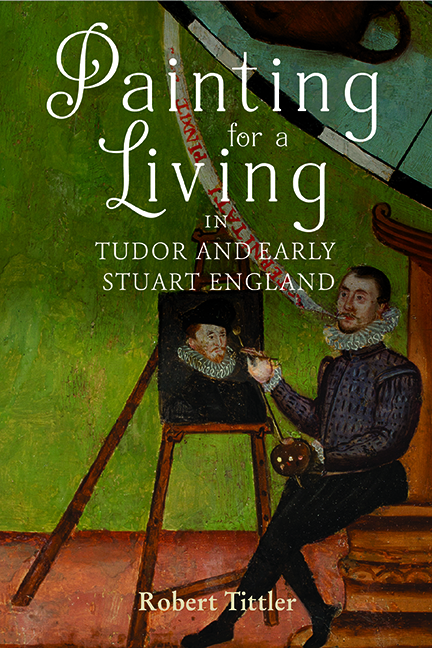Book contents
- Frontmatter
- Dedication
- Contents
- List of Illustrations
- Preface
- Acknowledgements
- Editorial Conventions and Abbreviations
- Part I Introduction
- Part II Kinds of People
- Part III Particular Specialities
- Part IV Ways and Means
- Part V Conclusion
- Bibliography
- Index
- STUDIES IN EARLY MODERN CULTURAL, POLITICAL AND SOCIAL HISTORY
9 - The Business of Painting
Published online by Cambridge University Press: 26 May 2022
- Frontmatter
- Dedication
- Contents
- List of Illustrations
- Preface
- Acknowledgements
- Editorial Conventions and Abbreviations
- Part I Introduction
- Part II Kinds of People
- Part III Particular Specialities
- Part IV Ways and Means
- Part V Conclusion
- Bibliography
- Index
- STUDIES IN EARLY MODERN CULTURAL, POLITICAL AND SOCIAL HISTORY
Summary
Whether before the Reformation or after, stranger-painters and painter-stainers, provincially based painters and London-based painters, picture painters, glass painters, and arms painters all painted for a living. But what sort of a living did they make, and how did they make it? The answer to the first question depended on a variety of factors: where they stood in the occupational hierarchy; how well they managed their business; and what arrangements pertained for undertaking their work. As the preceding chapters have helped to explain, they also depended on the contextual circumstances of the day: on wider issues of politics and society, foreign and domestic policy, and on religious and social factors. In the Tudor and early Stuart era, the clientele for painted work changed continually and rapidly. As we’ve seen, the opening years of the Tudor age found English portraiture in the form of easel painting barely in its infancy, glass painting and manuscript illumination well supported, decorative painting (especially in ecclesiastical establishments) in constant and high demand, and arms painting increasingly popular. Over the ensuing decades glass painting, which had featured largely in ecclesiastical settings, almost disappeared save for heraldic imagery before springing back to life in early Stuart times, peaking with Archbishop Laud's call for ‘the beauty of holiness’. A public for panel portraiture grew steadily in both absolute numbers and social range. That for arms painting reached unprecedented intensity throughout the Elizabethan era and into the next century.
For many painters, the rapidity of change, much of it transpiring over the single lifetime of an individual painter or workshop, favoured versatility over specialization. Concentration on a single genre may have become more common over time and amongst painters in the larger urban centres than in rural areas, but it was still a work in progress. In the eighteenth century, for example, the demands of the market allowed portrait painters, known as picturemakers, picture-painters, or simply ‘artists’, to specialize almost exclusively in that medium. By that time, painter-stainers had almost exclusively become decorative painters, and rarely took on portraiture, so that the division between the two had become essentially complete. But even in the early seventeenth century such a bifurcation remained tentative. The concept of the ‘artist’ to describe a category of painters was only then emerging in court circles.
- Type
- Chapter
- Information
- Painting for a Living in Tudor and Early Stuart England , pp. 204 - 230Publisher: Boydell & BrewerPrint publication year: 2022



